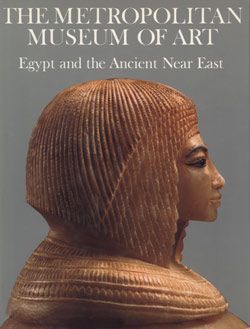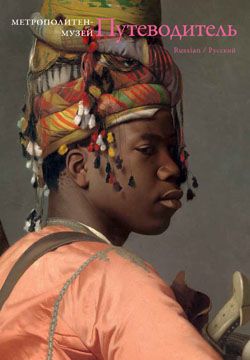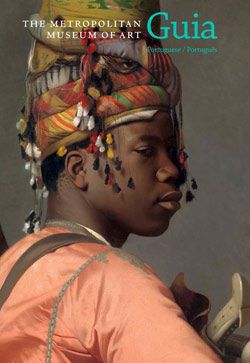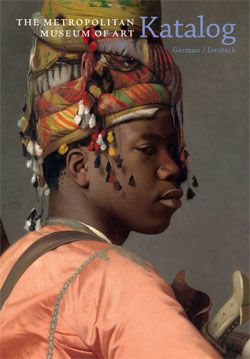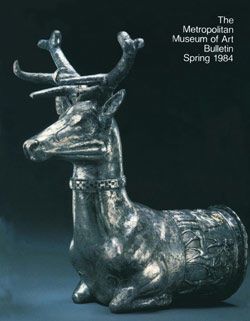Storage jar decorated with mountain goats
Not on view
People of the ancient Near East used the abundant supply of clay to construct bricks for their cities and also as a surface upon which to record their histories, religious beliefs, and business transactions. In addition, clay was widely used for making pottery — so much so that archaeologists find more pottery in the ruins of ancient cities than any other form of art.
In the fourth millennium B.C. in central and southwestern Iran, painted decoration on pottery like this large jar reached a new level of sophistication. Combinations of geometric patterns, birds, and animals were silhouetted in dark brown on buff clay. These fine vessels were often found in tombs and therefore may have been used in religious or burial rituals.
This ovoid storage jar is a masterpiece of early pottery making, incorporating a design that is stylized but not static. A mountain goat, or ibex, stands in profile on the topmost of six bands, which circles the widest part of this large jar and emphasizes its great girth. The curves of its greatly enlarged horns echo the circular form of the jar, as do the curved spaces between the animal’s legs. The ibex possesses great energy and animation — a sensation created by the sharp projections of the ears, tail, tufted hair on the muzzle and fetlocks, and the sweeping curve of the horns. Straight lines alternating with zig-zag patterns frame the space on each side of the animal. The design unit of an ibex within a geometric frame is repeated twice more around the circumference of the jar. The overall artistic effect is one of movement and dynamism. The slightly irregular shape of the pot suggests it either was built up by hand with coils of clay or was thrown on a slow wheel.
Adapted from, Art of the Ancient Near East: A Resource for Educators (2010)
#7001. Storage Jar Decorated with Mountain Goats
-
7001. Storage Jar Decorated with Mountain Goats
-
883. Kids: Storage Jar Decorated with Mountain Goats
Playlist
This image cannot be enlarged, viewed at full screen, or downloaded.
This artwork is meant to be viewed from right to left. Scroll left to view more.








